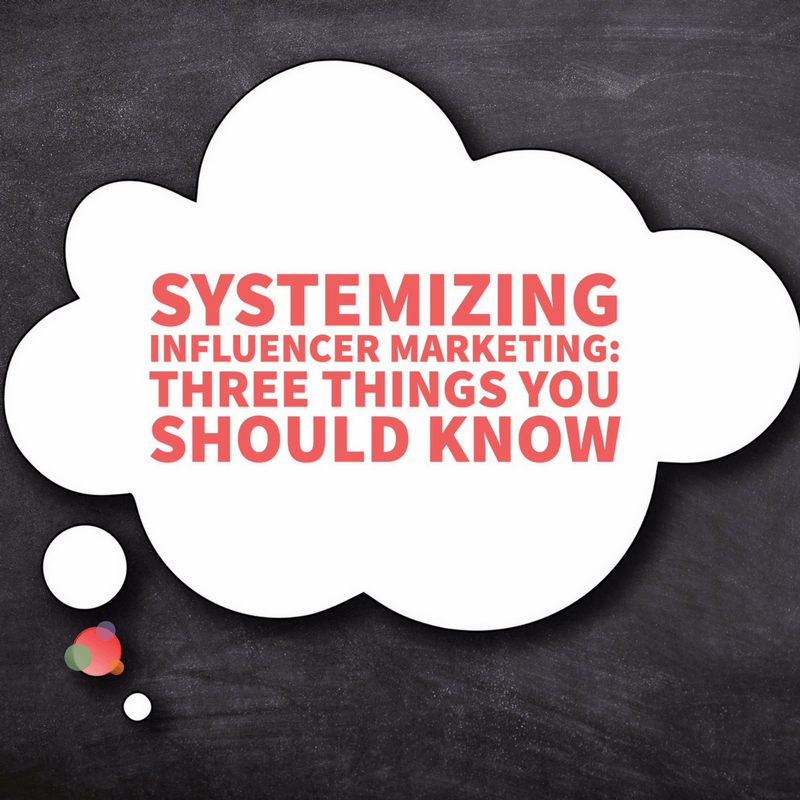 There is no denying the rise of the “influencer” has led to the growth of influencer marketing.
There is no denying the rise of the “influencer” has led to the growth of influencer marketing.
It is now seen as an important component to myriad PR and communications campaigns.
And why shouldn’t it?
To me, it makes a lot of sense for public relations professionals to take ownership of this type of marketing.
It’s the amalgamation of media and blogger relations, social media marketing, and paid-for content.
It’s a tactic in which all roads lead back to PR professionals driving the strategy.
From the nation’s top PR firms to independent practitioners, influencer marketing is a service we all can execute.
And, more importantly, we can and should integrate it into a measurable communications plan.
Media relations is the foundation on which influencer marketing campaigns develop.
The ability to create stories and identify how to amplify them with influential individuals is second nature to PR pros.
In short, the skill diversification from media relations to influencer marketing is minimal at best.
But first, we must establish trust and earn buy-in from our clients to really showcase the value and return.
While it may seem secondhand to us, some clients and prospects have real questions and concerns about how best to develop and execute an influencer marketing strategy.
And they are completely valid in expressing these concerns.
Some brands spend decades cultivating an image and relationship with consumers.
One ill-guided blogger collaboration or perceived threat to the authenticity they have worked so hard to achieve can immediately put the brakes on an influencer marketing program.
Common questions from clients and prospects we often receive include:
- How do you select influencers?
- What level of control can the brand maintain in an influencer program?
- How do we measure effectiveness?
- Is paying for an influencer’s collaboration worth it?
To me, these questions and concerns create opportunity.
In addition to soothing client apprehension, we can showcase the importance of integrated marketing communications with a strategy that complements earned editorial, amplifies social presence, and establishes partnerships with individuals who can create interest and demand with their audience.
To create an effective influencer marketing program that clients can get behind, we must systemize the process.
The following three basic pillars of influencer marketing show how to integrate this service into a successful communications program.
Create an Influencer Marketing Evaluation Framework: Bigger isn’t Always Better
Just because a person has one million Twitter followers or touts a Kardashian-like following on Instagram, does not mean they are the ideal influencer for your client.
Create a qualifying system by which you can evaluate influencers and make recommendations based on a predefined set of criteria.
For example, we always look at the influencers’ overall content and engagement rates.
What are they posting on their social channels and how people respond to those posts?
What is their domain authority and how many visitors does their site attract each month?
And more importantly, which demographics visit the site and how often?
Just like the good old-fashioned media list, keep your influencers in a database.
Then you can easily access and review your qualifying data with your client when presenting opportunities.
Don’t Expect for All Influencer Participation to Be Free
Like any tried-and-true PR pro, I tend to roll my eyes at advertorials.
Where is the sweat, blood, tears, and months of follow-up that go in to securing a major placement!?
But with the rise of influencer marketing, my eye-rolling has been replaced with evaluation.
Every influencer is different and you must evaluate every opportunity individually, whether it requires a monetary exchange or not.
Now, this is where a good qualifying system comes into play.
If a collaboration between brand and influencer arises, and the analytic and demographic stars align, then sponsored content should be evaluated with a cost-benefit analysis and presented to clients.
For example, if five influencers request payment for a predetermined amount of social posts, and you are able to compare that spend and its effectiveness against a print campaign or advertorial, and it can reach more people in an influential way, then the cost versus benefit becomes easy to analyze.
Maintain Authenticity: Be True to the Brand
This may seem like an odd third tip after I just touted the benefits of paid-for influencer collaborations, but hear me out.
There is a difference between securing a partnership with an influencer that is in-brand versus sponsoring content solely on a vanity metric or vague promises such as, “I’ll wear your client’s shoes on TV.”
In instances like these, you must ask yourself:
- What value does this bring?
- How can I measure return?
- What are the agreed upon partnership expectations?
Like any good relationship, there must be agreement on roles and outcomes, and it must be a complementary engagement.
If an influencer doesn’t fit a brand’s ethos, the authenticity factor is going to plummet.
Now, you may ask, how can we maintain authenticity when we are paying influencers to post content?
More and more, influencers are increasing transparency with their audiences noting sponsored content with hashtags such as #partner, #ad, or #sponsored.
And, in the influencer landscape, this is transparent and authentic.
To further that point, only if it is authentically in-brand will it resonate with the influencer’s audience.
By systemizing your influencer marketing program you can qualify efforts against campaign goals, allocate, and analyze resources effectively, and establish a network of individuals that can speak direct to your audience.
When approaching influencer campaigns in a strategic way, we are able to establish trust, create value, and confidently lead our clients into new marketing domains.